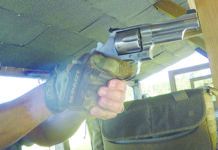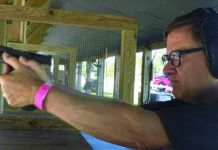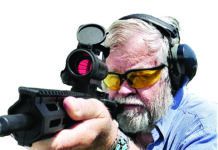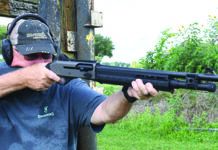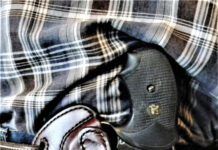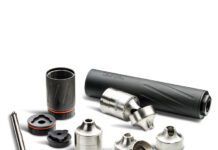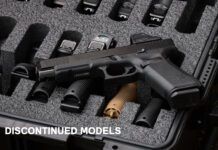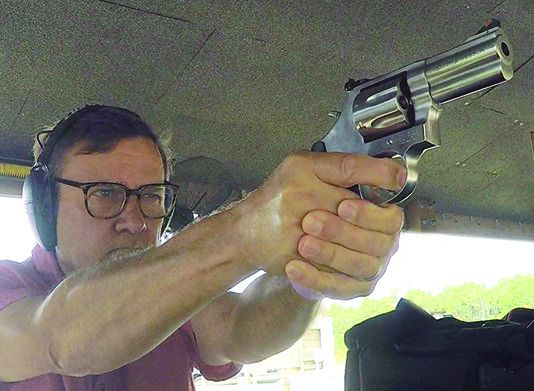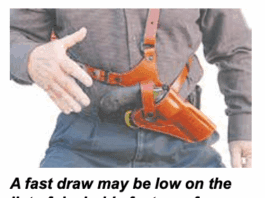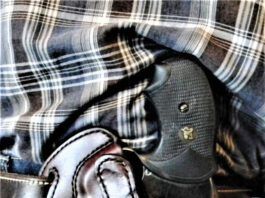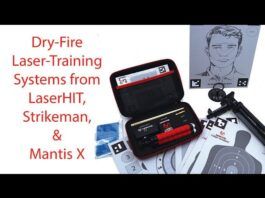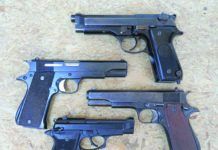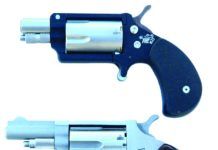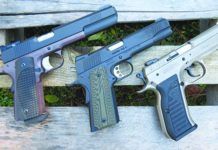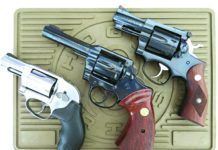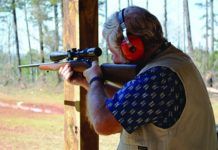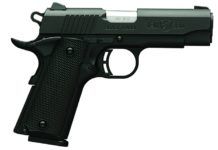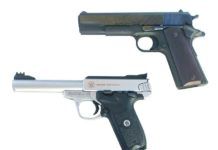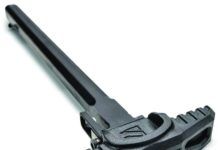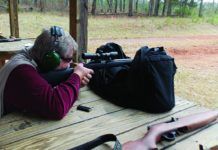Surplus 9mm Pistols From Star and Beretta: Worth the Cash?
The idea of what constitutes a "surplus firearm" has different meanings depending where you are in the world. Surplus firearms in the U.S. means extra on hand or dated equipment. In other countries, it could mean one step away from scrap metal. We try to avoid the latter, but we are always on the lookout for a diamond in the rough, and thought we'd look at a few surplus 9mm Luger and 9mm Kurz (380 Auto) pistols. We wanted to look at these pistols through the lens of an inexpensive pistol that would be suited as a sand pit plinker, but in a pinch, it perhaps could be called on to defend the ranch. The problem with older surplus pistols is the lack or scarcity of spare parts, including magazines. By definition, all surplus weapons have been used, and some used more than others.
We chose four pistols that are fairly common and easy to find online to go bargain hunting: Two are Berettas, a Model 92S and Model 85F, made in Italy by P. Beretta S.P.A., and two are Star pistols, made in Spain by Star Bonifacio Echeverria, S.A., a Model Super B and Model B. The Star Model Super B looks like it is ready for the scrap yard and the older Model B looked well used, but as we found out, both still had some teeth. The Beretta 92S is a second-generation 92, which evolved into the 92FS. The 92S is a lot more of a European gun than the 92FS, which definitely has US influence. The Beretta 85F is a smaller version of the 92FS and is the most modern of the pistols tested.
In past issues we have tested some old-school combat pistols and found them lacking, which makes sense. A horse worked a century and a half ago; but now we (can) drive Hummers. Accordingly, we had to make some accommodations for these guns' age. Since these are older pistols, we did not test with proofing loads or +P+ loads. These pistols were not designed for that type of high-pressure ammunition, and we had no desire to taste Italian or Spanish steel. Not that we are implying these are substandard pistols. These pistols are safe when used with ammunition originally intended for them. What we did want to find out was if different bullets types would impact performance. For instance, the Star pistols were manufactured before hollow-point bullets were popular, and we figured they might choke on hollow-point ammunition. We also wanted to see if different bullet weights would cause a stovepipe jam or failure to eject. We used off-the-shelf 9mm Luger ammo consisting of Hornady American Gunner with 115-grain XTP jacketed hollow points ($47/75 rounds), Aguila 124-grain FMJs ($17/50), and SIG Sauer 115-grain FMJ ($18/50). We found all three ammo types cycled flawlessly through the pistols with no issues. In the Beretta 85F, we fired 91-grain FMJs from Tula, 90-grain Speer Gold Dot hollow points, and Hornady Critical Defense 90-grain XTPs, which feature a hollow-point bullet with a polymer insert to facilitate expansion.
For accuracy testing, we placed the pistols on a bench rest to fire at targets set at 25 yards. In speed-firing exercises, we shot at targets at 7 yards, performing both Bill Drills and Mozambique Drills. The object with the Bill Drill is to fire as fast and as accurately as possible to hit an 8-inch zone. The Mozambique requires two fast shots to center of mass and a one to the head. All must be within their zones to be successful. This is what we found out when we exercised these old pistols.
Ruger Recalls Most Mark IVs
Ruger has issued a wide recall of all Mark IV and 22/45 models because of a problem with the safety and sear and has told owners that the pistols should not be used.
The issue is: In some cases, if the trigger is pulled while the safety lever is midway between the "safe" and "fire" positions and not full engaged in either, the pistol may or may not fire when the trigger is pulled.
If the gun doesn't fire when the trigger is pulled, it may fire if the user then pushes the safety to the "fire" position without the trigger being activated.
Here's a statement from a Ruger press release on the company's website:
"Although only a small percentage of pistols appear to be affected and we are not aware of any injuries, Ruger is firmly committed to safety and would like to retrofit all potentially affected pistols with an updated safety mechanism. Until your Mark IV pistol has been retrofitted or you verify that it is not subject to the recall, we strongly recommend that you not use your pistol."
Ruger says they have received a "small number" of reports from the field indicating the problem exists. Additional testing confirmed the issue and the recall was issued.
Peruta Declined Supreme Court Hearing
I was disappointed to see that on June 26, the U.S. Supreme Court decided not to hear Peruta v. California. A Supreme Court decision would have answered some important legal questions: Does the Second Amendment's coverage for people to keep and bear arms extend outside the home? Does it cover the right to carry concealed firearms in public? Peruta might have provided definitive legal answers to those questions. Gun owners already know the answers, so we're frustrated that a natural right to self protection is hemmed in by state statutes.
American-Made 9mms: Ruger, Springfield, and Honor Defense
When it comes to 9mm carry pistols, there are several characteristics that immediately come to mind. Polymer frame, striker fired, wide grips, and high capacity. Recently we found three, or should we say three and a half pistols, that didn't quite fit that description.
The first was Ruger's $579 American Compact model 8633 that featured thumb-operated safeties on both sides.
Next were products from Honor Defense, one of the newer makers on the market. The $499 Honor Guard HG9CLE is a single-stack double-action-only pistol. The LE suffix stands for law enforcement. This gun was a variation on the original Honor Defense pistol, but it lacks a Picatinny accessory rail to favor inside-the-waistband carry for undercover work. Our 3.8-inch-long-barreled Compact LE pistol arrived with a second top end ($250, sold separately) that housed a 3.2-inch-long barrel. The shared receiver boasted unique grip contours, and both top ends utilized the same guide rod and recoil spring.
Third was the $1220 Springfield Armory 1911 EMP 4-inch Conceal Carry Contour pistol, which arrived with three 9-round magazines. The EMP operates with a single-action trigger, and this might have been our first test wherein a single-stack 1911 pistol packed more rounds than its polymer-framed competitors. Its descriptive name referred to the gun's backstrap, which has been sliced diagonally, making the rear of the grip about of an inch shorter than if it were continued in a straight line to the heel of the magazine well. This made the pistol more concealable, specifically when holstered with a butt forward (or muzzle back) cant.
Our test sessions began and ended on the reactive targets located on Steel Alley at American Shooting Centers in Houston. Accuracy data was collected from a distance of 15 yards with the guns supported by a Caldwell Matrix rest. Our choice of test ammunition consisted of Browning's new 147-grain BXP X-point jacketed hollowpoints and three different rounds from Black Hills Ammunition of Rapid City, South Dakota. They were the 115-grain JHP EXPs that were designed for maximum performance in guns not rated for +P ammunition, a 124-grain JHP +P choice, and a new subsonic round, the 125-grain non-expanding HoneyBadger ammunition. We tracked the velocity of each combination using an Oehler 35P (printing) chronograph.
All three guns were recent releases, so we really didn't know what to expect. As always our goal was to reveal reliability and accuracy as well as handling characteristics. Would we find versatility or would the accuracy of each gun be limited to a single bullet weight? Our job was to deliver to point of aim every time we pulled the trigger. Would any of these guns make that job easier than the others? Here is what we learned.
Mouse Gun Shoot Out: Three Tiny Pocket Pistols Compete
Love them or despise them, mouse guns — aka very small pocket pistols — are an important part of the self-defense landscape by virtue of their sheer numbers. For example, the North American Arms Mini Revolver is a popular handgun that has created a niche all its own. It is offered in several versions, with relatively long barrels as well as the traditional short barrel. We were interested in what type of accuracy a trained shooter could wring out of the Mini Revolver because a 6.5-ounce 22 Magnum just might have appeal as a pocket revolver or backup. We also tested a newcomer and competitor to the Mini Revolver. The PTAC Bullfrog is a copy of the NAA revolver in some ways but is mechanically different in others. We also added a small automatic pistol to the test. The Beretta 950 25 ACP handgun is a widely used pistol and can be called a standard among pocket pistols. For safety, each of the revolvers and the Beretta self-loader demand that the hammer be cocked before the pistol may be fired. Each also features a single-action trigger, although the revolvers must be cocked for each shot. In the end, we thought one gun offers a good-enough chance at stopping hostile action, but to be frank, members of our team would still be reluctant to buy it.
10mms: How About the P220?
Neat comparison of 10mms; kinda hoping you'd toss the SIG P220 in 10mm into the mix. I thought your comments on the Kimber TLE II grips were interesting. I haven't shot that model, but I own a Kimber Custom Eclipse II in 10mm and have no such issue with my grips when firing up to 100 rounds in a session. For those who would like the edges less raspy, I use blue buffing on a buffing wheel mounted in my drill press to polish out G10 revolver and knife grips. It's not too aggressive, and you could take a little edge off without substantially changing the grip's appearance. Clean up with a little denatured alcohol and a toothbrush and you're ready for the range.
Good Buys, or Goodbyes? We Test Experienced Wheelguns
Before law enforcement changed over to semi-automatic pistols, most officers carried a 357 Magnum revolver. Though some write off revolvers as the firearms equivalent of rotary phones, many of our staff consider the revolver to be a simple-to-operate self-defense firearm with built-in safeties and no magazine to lose. We also like the 357 Magnum cartridge. In addition to self-defense use, some team members have used the round to hunt medium-size game, so power isn't an issue.
Because a good revolver stands the test of time and usage well, but also depreciates enough to become affordable for more folks, we assembled three used revolvers from what was once the big three of U.S. revolver manufacturers—Colt, Smith & Wesson and Ruger. In general, we would rate the condition of these revolvers from 80 to 90 percent by NRA standards—we could tell they have been used, but we could not see where they had been abused. All samples were chambered in 357 Magnum, and all were designed for self-defense with barrel lengths that ranged from 2.15 inches to 4 inches and double-action/single-action trigger modes. Safeties are built into these three revolvers. The S&W uses a hammer stop, while the Ruger and Colt use hammer transfer bars.
From that starting point, this pack then diverged, with each offering characteristics that ranged from thumbs-down to thumbs-up for our shooters. Some incorporated an excellent grip that helped tame the felt recoil of the 357 Magnum; some were slim and more easily carried concealed, and some were equipped with large, easy-to-align sights.
With any used revolvers, we have a process of testing the chamber-barrel alignment with a range rod, and we found all were aligned. We also check the timing to see how the cylinder rotates in DA mode and SA mode to ensure the chamber is aligned with the bore of the barrel. They were. We also look at the gap between the front of the cylinder and the forcing cone or rear of the barrel. We use a feeler gauge and expect to have .006 clearance. Any less and there is a chance the cylinder may bind after shooting as fouling builds up. Any more and the user might experience splatter from burning gases escaping from the gap. We also look for forward and rearward play in the cylinder when locked in the frame. These revolvers were tight and stood as good examples of the revolver manufacturers' art and science.
We tested accuracy at 25 yards, which pushed the envelope of these revolvers' capabilities, depending on the user. We also found these revolvers had good accuracy. In close-range testing, some of these revolvers could get lead downrange fast and in good groups. Test ammunition consisted of Winchester PDX1 Defender 357 Magnum with a 125-grain bonded jacket hollowpoint, Aguila 357 Magnum with a 158-grain semi-jacketed hollowpoint, and SIG Sauer 38 Special +P, loaded with a 125-grain jacketed hollowpoint.
We had no issues with any of the revolvers. They all performed in DA and SA mode and loaded and ejected empties if we did our part and used gravity to our advantage. We did find that the S&W had the advantage as a concealed-carry revolver, but the Ruger and Colt were quite capable. Here's what we found out about these handguns after the brass cooled.
22 LR Bolt-Action Rifles: We Test CZ, Savage, and Marlin
The 22-caliber rimfire bolt-action rifle owns a warm sport in the heart of many shooters because they were often the first rifle that many of us fired. Many pleasant hours are spent with such a rifle. The experience unites shooters across a spectrum of lifestyles. But in the present, the bolt rimfire can also be an economical, accurate, and reliable firearm for plinking, small-game hunting, and informal target practice. The bolt action rifle has a reputation for superior accuracy over the self-loader, and, overall, our testing proves this out. In this report, we test a quartet of entry-level and higher-end rifles to see what it takes to get our money's worth, however that is defined. Our test guns this round included the Savage Mark II F 26700, $231; the CZ-USA CZ 455 American 02110, $400; the Marlin XT 22RZ 70763, $220; and the Savage Mark II BTV 28750, $390.
Accuracy testing was conducted with three loads. Winchester's M22 loading came from SportsmansGuide.com ($75/1000); MidwayUSA.com supplied the CCI Velocitor ($7.40/50); and Fiocchi's HV rounds ($6.50/50) originated from Bulkammo.com. We also conducted side tests with low-velocity subsonic loads, including the CCI Segmented load. For offhand shooting, we used Winchester M22 rounds to gauge the rifles' smoothness and handling in firing at targets at known and unknown ranges.
There were no defects that made any rifle less desirable, when the price points were considered. The two inexpensive rifles gave a credible performance. For small-game hunting at treetop height and out to 25 yards, there would be little reason to spend a lot. In fact, you'd have to go out to 50 yards to see the Savage BTV was the most accurate rifle.
Browning Adds Five New Pistols to Black Label 1911-380 Line
Browning has added new offerings to the Black Label 1911-380 pistol line.
The new Black Label 1911-380 Medallion Pro will be available in Full Size and Compact versions. These new pistols will feature an aluminum-reinforced composite frame and slide with a blackened stainless steel finish with silver brush-polished flats. Grips on this new model are checkered rosewood with a gold Buckmark logo. The pistol comes with two magazines. The Full Size model barrel length is 4.25 inches and the Compact barrel length is 3.625 inches. Both the Full Size and Compact versions are available with steel three-dot sights or steel night sights. Suggested Retail price with the 3-dot sights: $800. Suggested retail price with night sights: $880.
Browning is also adding three Compact models to the 1911-380 line in 2017. The Black Label 1911-380 Compact has the same features as the Black Label 1911-380 Full Size but with a 3.625-inch barrel. This model has composite black grips and includes fixed combat sights. Suggested retail: $670.
Browning is also adding Compact models to both the Black Label Pro and the Black Label Pro with Rail. Both of these models have 3.625-inch barrels and are available with either steel three-dot sights or steel night sights. The Black Label Pro Compact has a suggested retail price of $800 for the three-dot model and $880 for the night-sight model. The Black Label Pro Compact with Rail and three-dot sight has a suggested retail price of $830, and the railed night sight model has a suggested retail price of $910.
22-Caliber Handgun Shoot-Out: Smith, TacSol, Beretta, Colt
In this installment, we are looking at some of the best 22-caliber pistols for all-around target shooting and training for marksmanship and personal-defense practice, with an emphasis on viability for personal-defense training. Some handguns are just fine for general plinking, but the modern shooter demands the ability to train with combat lights or even a red-dot sight. All 22s do not allow this type of versatility. Let's look at four 22-caliber handguns and see how they stack up as modern trainers.
The 22 self-loading handgun is a great firearm that every handgunner should own at least one of. The 22 is a great trainer, and it is also a good small-game handgun, and it is even useful in some forms of competition. The absence of recoil and muzzle report compared to centerfire handguns is often touted, but recoil and muzzle blast are there, simply in easily manageable portions. The shooter is free to concentrate on trigger press, sight picture, sight alignment, and grip. Practice in offhand fire, combat practice, firing for extreme accuracy from a solid rest, clearing malfunctions and hunting game are just some of the practice that may be accomplished with the 22 pistol. For small-game hunting, excellent accuracy is demanded. For combat practice—and this is an important point—the handgun should be similar to the centerfire defense gun in accuracy. In that manner, the shooter isn't given a false sense of security by a 22 that is much more accurate than the 9mm or 45 they use for personal defense. When practicing with the 22, the serious shooter should use the same grip and trigger press that he or she uses when mastering the 9mm or 45. Using a lighter grip or shooting fast just because the 22 is so controllable doesn't cross over into personal defense skills; it is simply shooting for fun.
We collected two 22-caliber handguns and two 22-caliber conversion units for comparison. One of the handguns is a new model and the other, a relatively new and often overlooked pistol. The firearms tested included the Smith & Wesson Victory 22, Beretta Neos 22, Tactical Solutions' Glock conversion unit, and a Colt 22 Ace conversion unit.
New Accessories, Gear, and Ammunition Choices for 2017
As prices continue to come down as the result of a gun glut (supply and demand economics), more folks will be buying guns, and we'll want to shoot them. So we will be adding enhancements to those firearms and feeding ammunition into them with a big grin. Here are some new products Gun Tests' staffers have taken note of that will make your firearms run, run better, or add fun.
Rimfire Field-Rifle Shoot-out: Marlin, Mossberg, and Ruger
In this installment, we test three rimfire rifles from three makers. The genre is the very popular and flexible field-gun description. The 22 LR rifle is an excellent trainer, a favorite recreational shooter, and a great small-game rifle. The rimfire is the one rifle every rifleman must have. The field gun is by definition, and the definition is liberal, a versatile go-anywhere get-anything shooter. Informal practice and small-game shooting are great pastimes. And while we are not focusing on personal defense, we should note that a good quality 22-caliber self-loader is a formidable firearm in skilled hands. Is a 22 LR a self-defense chambering we'd recommend? No. Have untold numbers of bad guys been deterred by being hit with a 22 LR round fired from a pistol or rifle? Yes. So reliability is important as well.
The rifle we are looking for should be light but not too light. It should be light enough for carrying for a day in the field, but it should have sufficient heft for good offhand shooting. While we carefully measure accuracy by firing from a solid bench rest, we also want a rifle that retains a good portion of its accuracy in offhand fire. Thus, a good balance of weight and a decent trigger action are desirable traits.
Historically, probably more 22 LR rifles have been set up as bolt actions, but because of their light recoil and shot-to-shot speed, self-loading rifles are the biggest sellers today. To keep prices in check, we selected a mix of readily available used and new firearms as well as optics for greater coverage of the best choices. As noted above, reliability is always important, but in this test, we allowed that if the firearm occasionally ties up and we lose a squirrel, we were more willing to give a gun a pass than if we were testing personal-defense firearms. It is almost a given that a 22 self-loading rifle malfunctions from time to time, and the fault is more often due to the construction of the 22 rimfire cartridge than any other single variable. We searched for ideal rifles and found some good picks. All had good points. Here's how they performed on a gun-by-gun basis.




